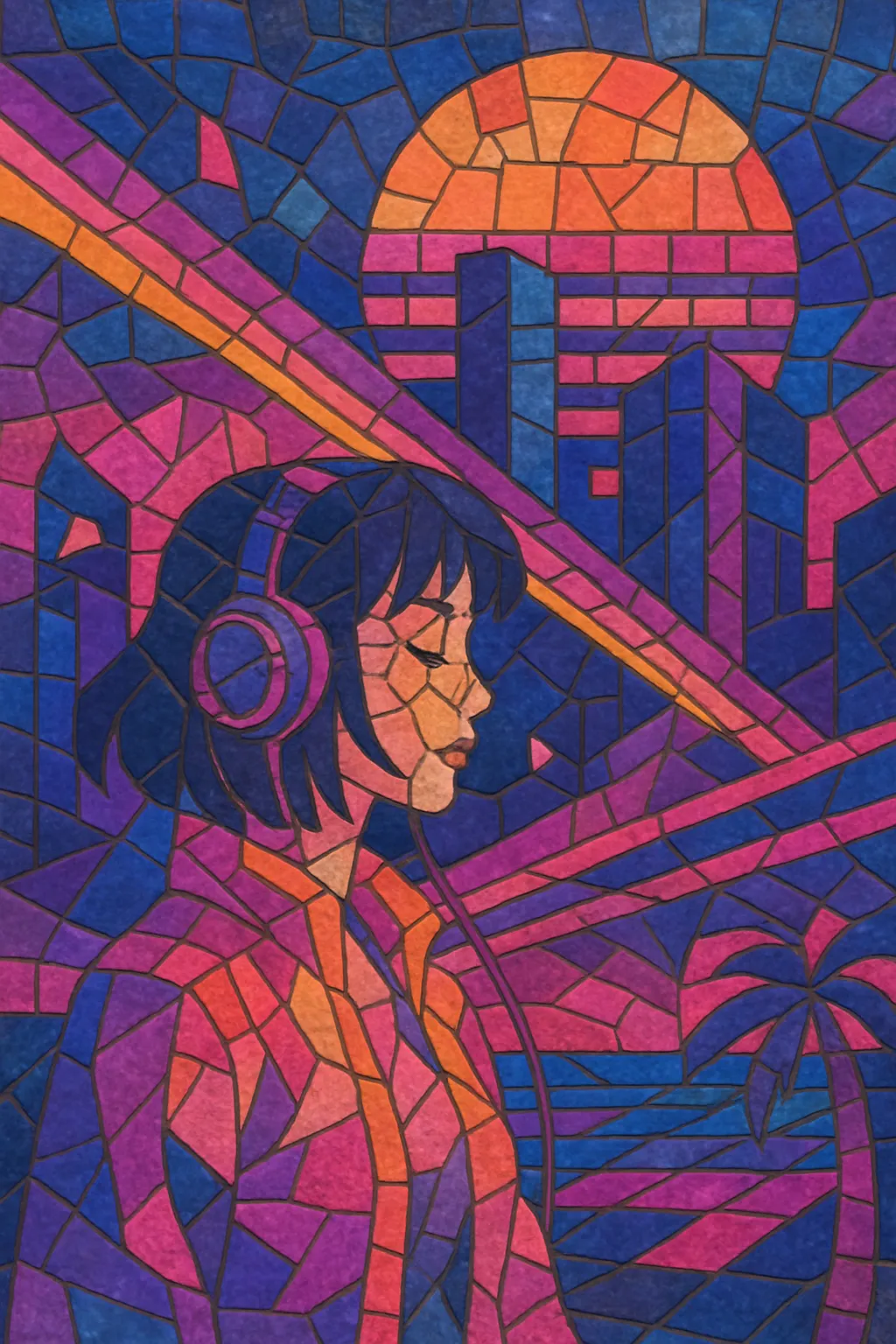
Future funk is an internet-born dance microgenre that fuses the sample-heavy ethos of vaporwave with the upbeat grooves of disco, funk, and Japanese city pop.
Producers typically chop and pitch up catchy hooks from late-1970s and 1980s records, loop them over four-on-the-floor drums, and apply filter sweeps and sidechain compression in the spirit of French house. The result is a sparkling, high-energy sound that feels both retro and forward-looking.
Visually and culturally, the scene leans into neon-soaked, anime-tinged aesthetics and nostalgic party energy, turning classic pop and boogie flavors into compact, danceable edits tailored for the web era.
Future funk emerged in the early 2010s within the online ecosystems of Tumblr, SoundCloud, YouTube, and Bandcamp. It grew out of vaporwave’s sample-based culture but traded vaporwave’s slowed-down, surreal mood for bright, dance-focused edits. Early tracks often flipped Japanese city pop and Western disco/boogie, compressing the best few bars into propulsive loops.
By the mid-2010s, artists such as Saint Pepsi (Skylar Spence), MACROSS 82-99, Yung Bae, Desired, and Night Tempo helped consolidate the sound and its visual identity. Anime artwork, 80s typography, and vaporwave-adjacent design became common, while YouTube channels and netlabels (e.g., Business Casual-adjacent spaces, Future Society, Neoncity Records) amplified the genre.
As interest in Japanese city pop surged globally—fueled by rediscoveries like Mariya Takeuchi’s “Plastic Love”—future funk found a larger audience. Producers moved from purely online releases to DJ sets and club nights, while some began recreating or clearing samples, blending live instrumentation with edits to avoid takedowns. The genre remains a vibrant, decentralized scene spanning the U.S., Japan, Korea, and beyond.
Because future funk is heavily sample-driven, platforms have periodically issued takedowns. This spurred a parallel current of replayed or interpolated parts, original compositions in the same style, and more careful sample selection, all while keeping the genre’s exuberant, filter-drenched core intact.

